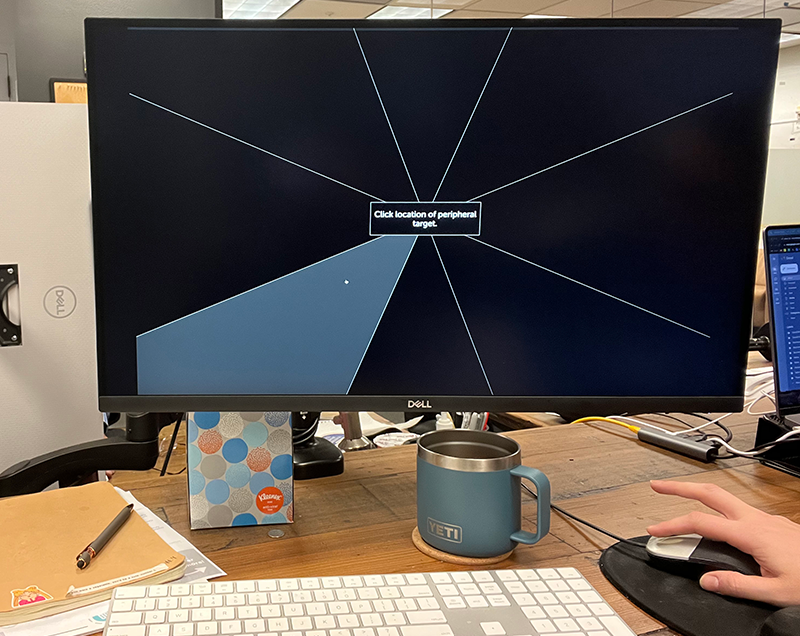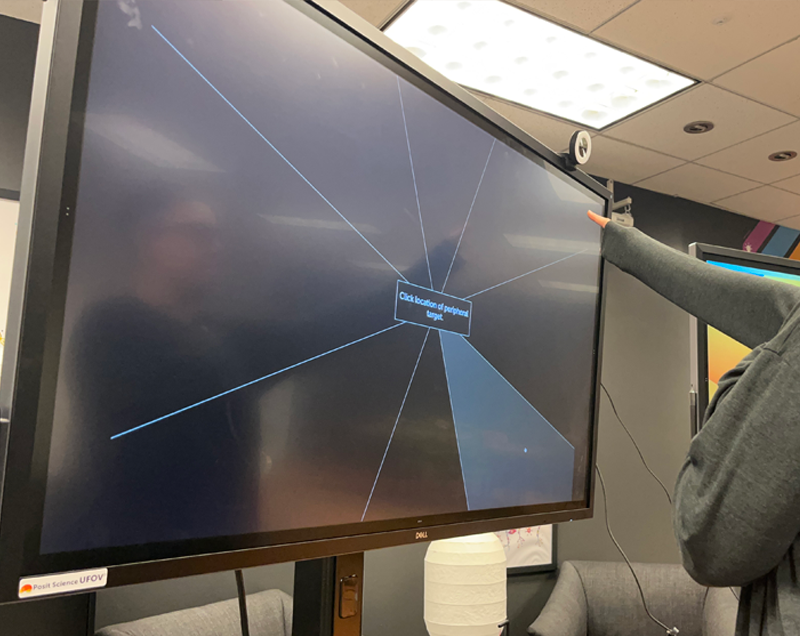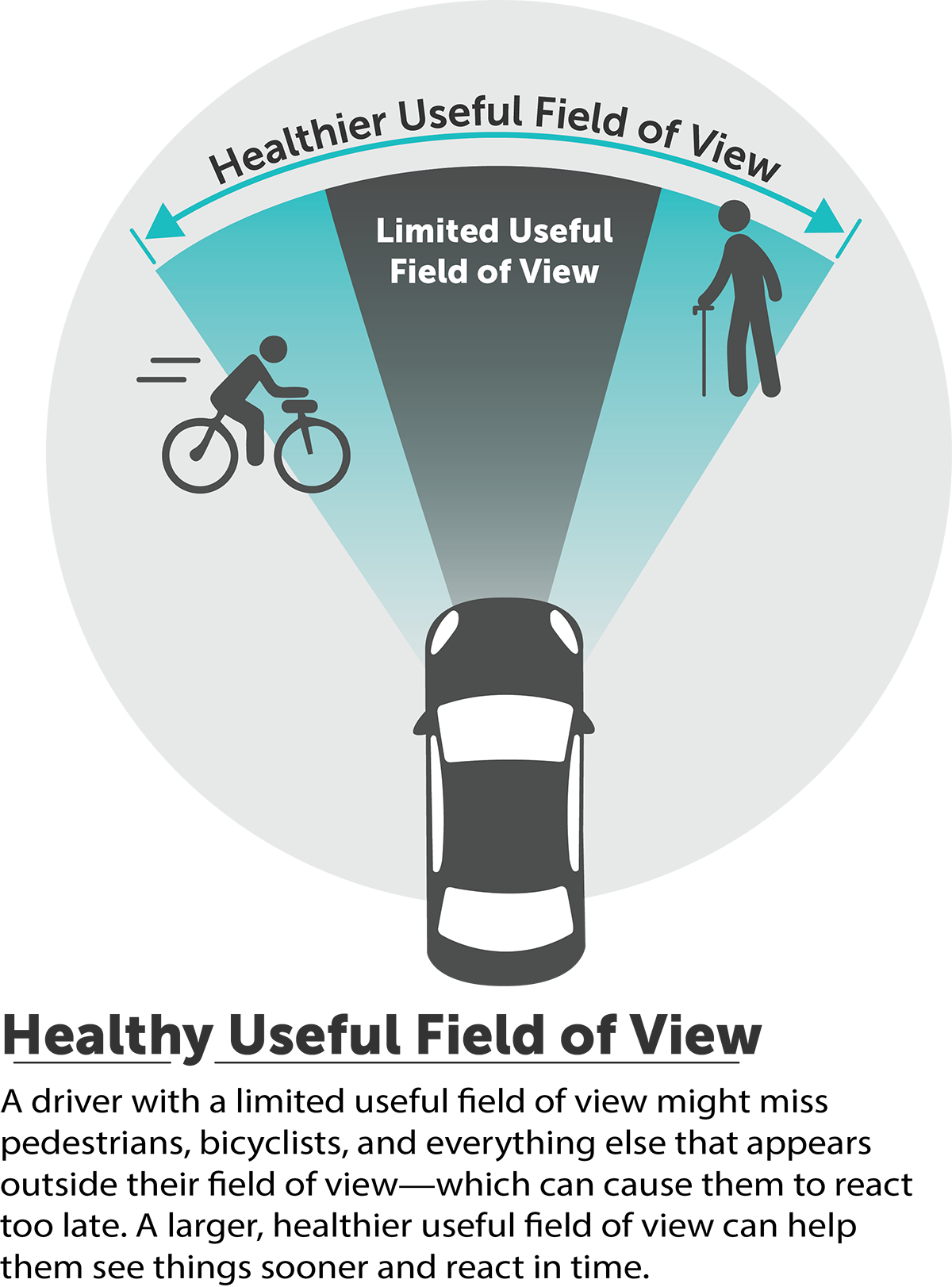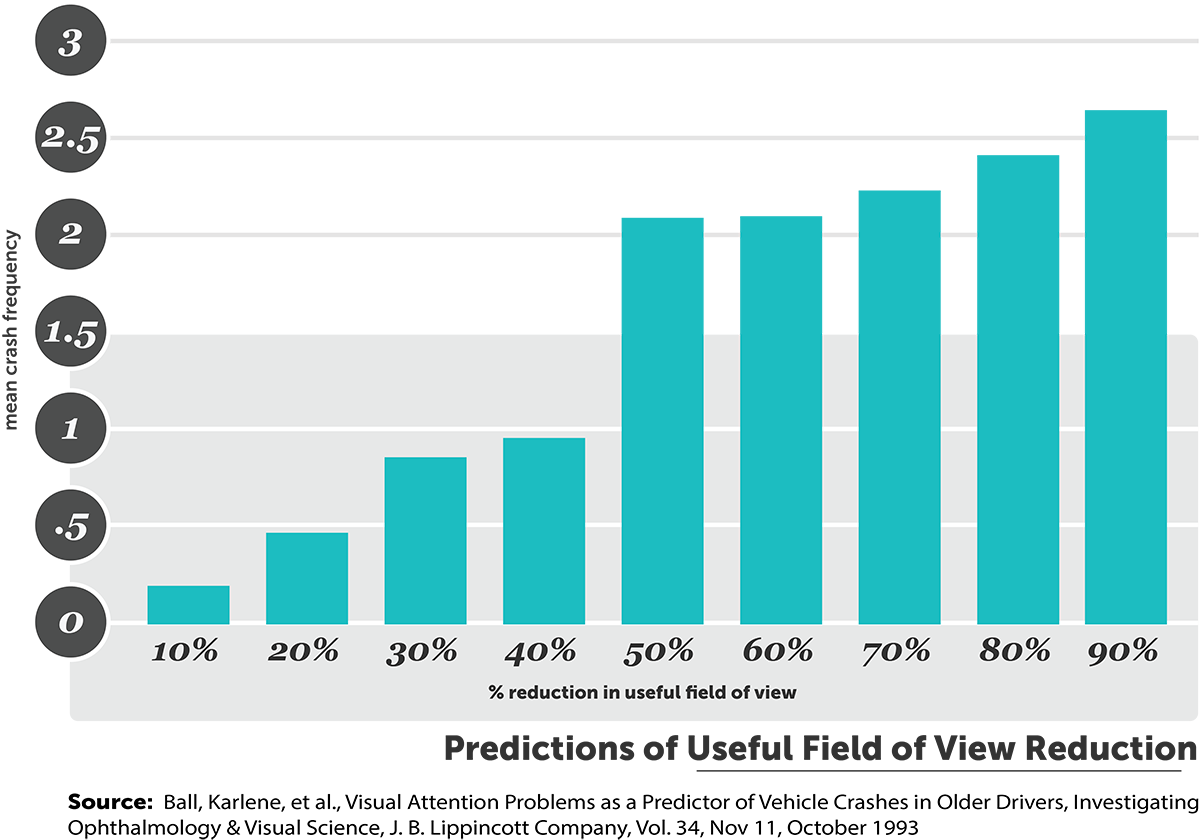The UFOV® assessment is a breakthrough cognitive assessment that reliably predicts crash risk in drivers. It was developed by Dr. Karlene Ball and Dr. Daniel Roenker of Visual Awareness, who were dedicated to improving mobility and quality of life for older adults and people with cognitive concerns. You can learn more about the UFOV development process. Posit Science is the exclusive licensee of the UFOV assessment and training technology.
What Is “Useful Field of View”?
“Useful field of view” is the area from which you can extract information in a single glance without moving your head or eyes.
Studies have shown that the size of useful field of view plays a key role in a person’s ability to drive safely. Individuals who experience reductions in their useful field of view are more likely to be involved in traffic accidents. In fact, individuals with poor useful field of view are more than twice as likely to be involved in a car crash than those in the normal range.1
What Is the UFOV Assessment?
The UFOV assessment is a short (5-10 minute) online test that is typically given to an individual by a healthcare professional. It can be completed on any Internet-connected computer.
The purpose of the UFOV assessment is to determine the size of the test-taker’s useful field of view, which can also be defined in terms of visual processing speed. Processing speed scores indicating a 40% or greater reduction in useful field of view signal cognitive performance concerns. 40% was chosen as the threshold because it is the point of greatest increase in crash frequency.
The body of research establishing the relationship between the UFOV Assessment and driving safety is impressive. In fact, studies show the UFOV Assessment is a better predictor of automotive crash risk than the tests typically used at the Department of Motor Vehicles.2
Bringing the UFOV Assessment to Your Customers or Patients
Health care providers, insurers, and other groups use the UFOV assessment to assess cognitive ability and predict driving safety in their patients and customers. Doing so can help keep people safe on the road while bringing a competitive edge to your practice or organization—and it’s less expensive, quicker, and easier to administer than simulators or on-the-road evaluations. It’s also non-invasive and confidential. What’s more, if a person’s score indicates a concern, you can also help them improve their driving safety with the BrainHQ brain training program.
Use UFOV on your existing computers

Use UFOV on a large touch-screen from Posit Science

Citations
- Ball, K. K. et al. Can high-risk older drivers be identified through performance-based measures in a Department of Motor Vehicles setting? Journal of American Geriatric Society, 54, 77-84 (2006).Owsley, C. et al. Visual processing impairment and risk of motor vehicle crash among older adults. Journal of the American Medical Association, 279, 1083-8 (1998).Rubin, G. S. et al. A prospective, population-based study of the role of visual impairment in motor vehicle crashes among older drivers: the SEE study. Investigative Ophthalmology and Vision Science, 48, 1483-91 (2007).Sims, R. V., McGwin, G., Jr., Allman, R. M., Ball, K. & Owsley, C. Exploratory study of incident vehicle crashes among older drivers. Journal of Gerontology, 55, M22-7 (2000).
- Owsley, C. et al. Visual processing impairment and risk of motor vehicle crash among older adults. Journal of the American Medical Association, 279, 1083-8 (1998).


